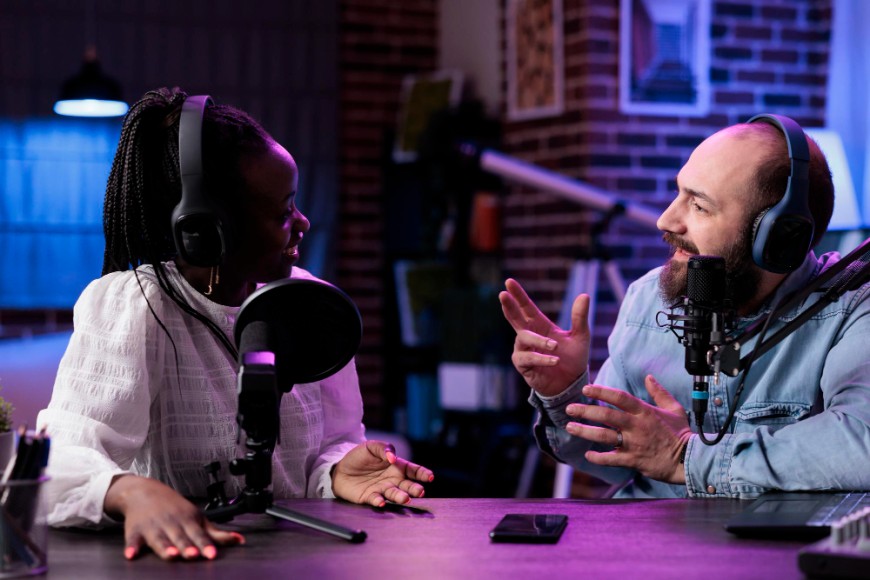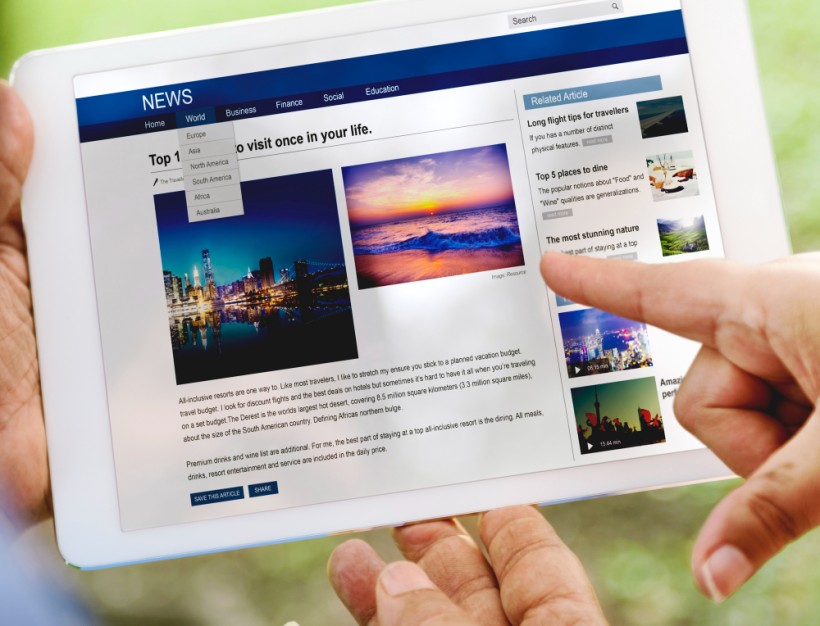What Earned Media Actually Means in a B2B Context
Earned media is any exposure your brand receives because someone else chose to talk about you, not because you paid for it or published it yourself. In B2B, this often shows up as a quote in an industry article, a mention in a webinar, a customer review, an analyst ranking, or a LinkedIn post from a practitioner who has used your product. The common thread is that these moments happen outside your direct control, which is why they carry more weight with buyers who are wary of polished marketing claims.
Why Earned Media Is Becoming Essential for B2B Growth
Most decision-makers start their research long before speaking to a sales team, and they rely on signals that help them understand which brands are credible and which ones are simply loud.
It also expands reach without requiring the kind of budget increases that paid channels now demand. Advertising costs have climbed, response rates have dropped, and buyers are more selective about what they click. But when a respected voice talks about your brand, that message travels further and sticks longer.
Earned media also strengthens a company’s search presence. Mentions, citations, and backlinks help buyers find you even if they weren’t looking for you. A single article or high-authority review can improve how your brand appears across search results, giving your owned content a better chance of being seen.
Most importantly, earned media influences the quality of demand. When people hear about your brand from sources they already trust, they enter your pipeline with more confidence. They don’t need long explanations or heavy nurturing because they’ve already encountered proof that you deliver value. In a market where buyers are cautious and competition is intense, that early confidence can determine which vendor moves to the top of the shortlist.
The Channels That Fuel Earned Media in B2B
Earned media comes from a mix of channels where buyers already spend time and gather information. Each channel plays a different role in shaping how a brand is perceived, and together they create the external signals that influence B2B decisions.
Public relations and industry journalism remain core drivers. A thoughtful quote in a trade publication or a contributed article from one of your experts gives buyers a reason to take your perspective seriously. These placements work because industry reporters look for substance like data, insight, or a clear point of view. When a company can offer that, reporters use it, and the brand earns credibility it couldn’t create itself.
Social platforms, especially LinkedIn, have become equally important. When practitioners share experiences, comment on product updates, or mention tools they rely on, those posts often reach more of the right audience than traditional marketing. Buyers trust commentary from their peers because it feels grounded in real work, not in messaging.
Reviews and testimonials are another powerful source of earned visibility. Platforms like G2, Capterra, and Gartner Peer Insights shape how buyers form shortlists. A pattern of positive reviews, or even a well-explained critical one, influences how prospects interpret your strengths and weaknesses. For many SaaS companies, these platforms are the first place buyers go before they ever visit the website.
Influencers and industry thought leaders extend this further. Their endorsement may not be paid; often they reference brands simply because a product solves a problem well. When a respected practitioner mentions a tool on a podcast or includes it in a public talk, it carries weight because their reputation sits behind the recommendation.
Communities also drive earned media in ways brands sometimes overlook. Slack groups, Discord channels, subreddit threads, and professional forums often contain unfiltered conversations about tools and vendors. A single positive mention in a busy community can influence dozens of buyers.
Events and speaking opportunities create similar ripple effects. When executives deliver useful insights on stage or participate in panels, attendees often share highlights on social platforms or reference the talks later in their own content. Those references become earned exposure that continues long after the event ends.
The common thread across all of these channels is low bias. The strongest earned media comes from places where the brand is present but not in control, allowing buyers to encounter it through sources they already trust.

Best Practices for Building an Earned Media Engine That Works
Strong earned media doesn’t happen by luck. But the result of a clear narrative, consistent content, and relationships that make others want to reference your brand. Here’s how to approach that.
Start by having a point of view that others can recognise. When a brand speaks clearly about its industry, customers, and approach, reporters, analysts, and practitioners have something to cite. Generic messaging produces no earned attention because it blends into what everyone else is already saying.
The next step is creating content that people actually want to use. Research with original data, case studies with real outcomes, useful explanations of emerging trends, or a fresh take on a common problem all give others material they can include in their own work. Accretive Edge and Samsung benefited from this approach: their content had enough substance that journalists, influencers, and customers picked it up and shared it without needing a push. Our own campaign — an Africa-based report on financial habits — grew into half of all media coverage because editors turned it into their stories. (Read the full 14 PR wins case study here).
Relationships also matter. Reporters pay more attention to companies that reach out with relevance, not volume. Influencers engage more when the brand’s story aligns with what they already talk about. Customers contribute reviews and testimonials when they feel seen and supported. None of this works if outreach or relationships are transactional or inconsistent.
Executive visibility strengthens this further. When leaders share insights regularly, they become reliable sources for commentary, and their posts can spark organic conversations about the brand. Many B2B companies overlook this, but an active, credible leadership presence often drives earned attention faster than formal campaigns.
Amplification is the final step. Every piece of earned coverage deserves to be shared across owned channels, added to sales collateral, and referenced wherever it can reinforce credibility. Many brands let earned wins fade too quickly instead of using them to support the rest of their marketing engine.
Together, these practices create momentum. The more value you put into your market, the more likely others are to talk about you.
How Earned, Paid, Owned, and Shared Media Work Together in B2B
Earned media is powerful, but it rarely works in isolation. It reaches its full potential when it’s supported by strong owned content and, when needed, selective paid distribution. Each channel plays a distinct role, and to grow faster, you need to use all three in a coordinated way.
Owned content is the foundation. Without articles, reports, webinars, case studies, or clear product explanations, there is nothing meaningful for others to reference. Reporters look for data, practitioners look for practical value, and influencers look for ideas they can build on. When a brand publishes work that meets those needs, earned attention becomes far more likely.
Paid media acts as an accelerant. It gives high-value content the push it needs to reach people who wouldn’t have seen it otherwise. A targeted LinkedIn campaign promoting a research report can put the brand in front of industry voices who may later cite it. Paid distribution doesn’t replace trust, but it increases the chances that trust-building content is discovered.
Shared media adds social proof and reach. When customers, partners, internal experts, and community members share the work in their own networks, it builds credibility and widens the audience. These posts often spark conversations that lead to more attention.
Earned media is the outcome that sits above all of this. It gives owned content more weight and makes both paid and shared activity more effective.
When these channels are aligned, they reinforce each other. A research report becomes the centrepiece. Paid distribution carries it to the right people. Earned attention grows as journalists, analysts, and practitioners reference it. Those references send buyers back to the owned content, strengthening brand authority.

Earned Media Is How B2B Brands Build Trust at Scale
Most B2B brands spend their time trying to get attention. But the market mostly favors those that earn belief. And belief doesn’t come from the story you tell about yourself alone, but from the stories other people choose to tell about you.
If you want to turn that belief into a repeatable advantage, Column can help. We work with teams to uncover strong stories, earn coverage from trusted outlets, and build a presence that your market takes seriously. If you want support shaping a clearer message and getting it in front of the right people, reach out today.

Johnson is a Content Strategist at Column. He helps brands craft content that drives visibility and results. He studied Economics at the University of Ibadan and brings over years of experience in direct response marketing, combining strategy, creativity, and data-backed thinking.
Connect with him on LinkedIn.





